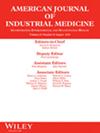A Work Systems Hierarchy of Controls: Analysis of Risk Controls Developed by Paramedics
Abstract
Background
The hierarchy of control (HOC) is a fundamental construct in work health and safety practice and central for employers to manage risk to the health and safety of workers in Australia, to fulfil their legal obligations. The current HOC has been identified as more effective for developing risk controls for physical hazards than for psychosocial hazards.
Methods
To address this limitation, this study involved development and testing of a more comprehensive hierarchy of risk control. The work systems hierarchy of control (WS-HOC) includes three hierarchical levels; elimination, re-design of systems and individual actions. Non-hierarchical categories within levels were developed to distinguish different risk control options, suitable for both physical and psychosocial hazards. Using the WS-HOC, risk controls developed by paramedics to address physical and psychosocial hazards associated with work-related musculoskeletal disorders were analyzed. These risk controls were developed using the APHIRM (A Participative Hazard Identification and Risk Management) toolkit in an ambulance service.
Results
The WS-HOC provided a single, contemporary, nuanced approach to evaluating the risk controls for paramedics and their likely effectiveness, regardless of the type of hazard.
Conclusions
This novel approach provides an alternative to previous attempts at supplementing the HOC to improve its application to psychosocial hazards. Further evaluation is required by both practitioners and researchers to examine its utility for other, different occupations.

 求助内容:
求助内容: 应助结果提醒方式:
应助结果提醒方式:


